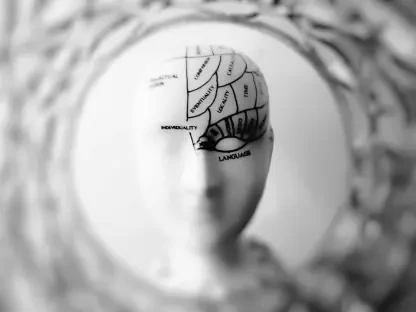In this exciting interview, we delve into the future of reproductive medicine with James Maitland, a renowned expert in robotics and IoT applications in healthcare. James shares insights into the world of AI-enhanced IVF, its transformative potential within reproductive medicine, and how digital advancements are shaping the path of fertility treatments.
Can you tell us about the recent breakthrough with the first AI-augmented IVF birth in Mexico?
The first AI-augmented IVF birth in Mexico marks a pivotal moment in reproductive medicine. This approach, aided by AI, successfully fertilized four out of five donor eggs, leading to the birth of a healthy baby boy. Implementing AI in this context offers a new level of precision in the IVF process, optimizing various stages such as fertilization and embryo selection. Compared to traditional methods, AI provides an enhanced capability to assess and select viable embryos, boosting the chances of a successful implantation.
How do you see AI transforming the field of IVF and reproductive medicine?
AI is set to revolutionize IVF by enhancing the precision and efficiency of various procedures. It offers significant advantages in embryo selection and treatment personalization, enabling a more tailored approach that aligns with each patient’s unique needs. Moreover, AI aids in streamlining laboratory operations, reducing manual errors, and increasing consistency in results.
Could you explain the decade-long AI project at ART Fertility Clinics in Abu Dhabi?
At ART Fertility Clinics, a comprehensive AI initiative has been underway for years, aiming to integrate healthcare technology with clinical insights. This project utilizes a robust AI system to analyze extensive clinical data and millions of embryo images. By doing so, it uncovers patterns and offers insights into embryo development, helping predict outcomes across the IVF journey.
How is the fusion of clinical and imaging data central to the success of AI in IVF?
The integration of clinical and imaging data is crucial for AI in IVF, as it provides a holistic view of the embryo’s development. The IVF-TFT model, for instance, leverages this fusion to assess embryos both in static and dynamic forms, offering real-time alerts to embryologists and refining embryo assessment processes. This model significantly enhances the precision of predicting developmental trajectories, making it a valuable tool in IVF clinics.
What insights have you gained from research on fertility rates both globally and in Abu Dhabi?
Research indicates a global decline in fertility rates, with Abu Dhabi experiencing unique challenges like consanguinity affecting ovarian reserves and obesity contributing to infertility. Despite these challenges, there’s a concerted effort to leverage AI-driven healthcare innovations to address these trends. The UAE government’s proactive support plays a crucial role in fostering an environment conducive to these technological advancements.
What opportunities do AI-powered predictions present for IVF clinicians and patients?
AI-powered predictions offer numerous opportunities, such as optimizing embryo biopsy and transfer schedules and reducing the subjectivity inherent in embryo assessments. By providing more accurate forecasts about embryo development stages, AI can significantly enhance decision-making processes for both clinicians and patients, leading to improved outcomes.
Can you elaborate on the current challenges in predicting embryo euploidy with AI models?
Predicting embryo euploidy with AI has proven challenging, with models plateauing at an AUC of around 0.7. This suggests that the current data sets, primarily based on morphology and clinical data, may not be sufficient. Additional data from the cytoplasm or metabolic signals might be necessary to improve predictive capabilities in this area.
How do saliency maps enhance the understanding of AI predictions in IVF?
Saliency maps are vital for understanding AI predictions, highlighting crucial areas of focus within embryo images that drive the AI’s decision-making process. Transparency is key here, as it builds clinician trust in AI tools and ensures that the predictions are grounded in meaningful, interpretable data.
In what ways is AI intended to complement, rather than replace, clinicians in IVF?
AI is designed to be a clinical partner in IVF, providing decision-support tools rather than replacing human judgment. Through reducing human error and optimizing clinical workflows, AI helps enhance patient outcomes while allowing clinicians to focus more on personalized care.
Do you have any advice for our readers?
Embracing AI in healthcare, especially in IVF, signifies a shift towards more personalized and precise treatments. My advice is to stay informed about these advancements, understand their potential, and be open to the changes they bring. The intersection of technology and medicine offers immense possibilities for improving patient outcomes and shaping the future of fertility treatments.









